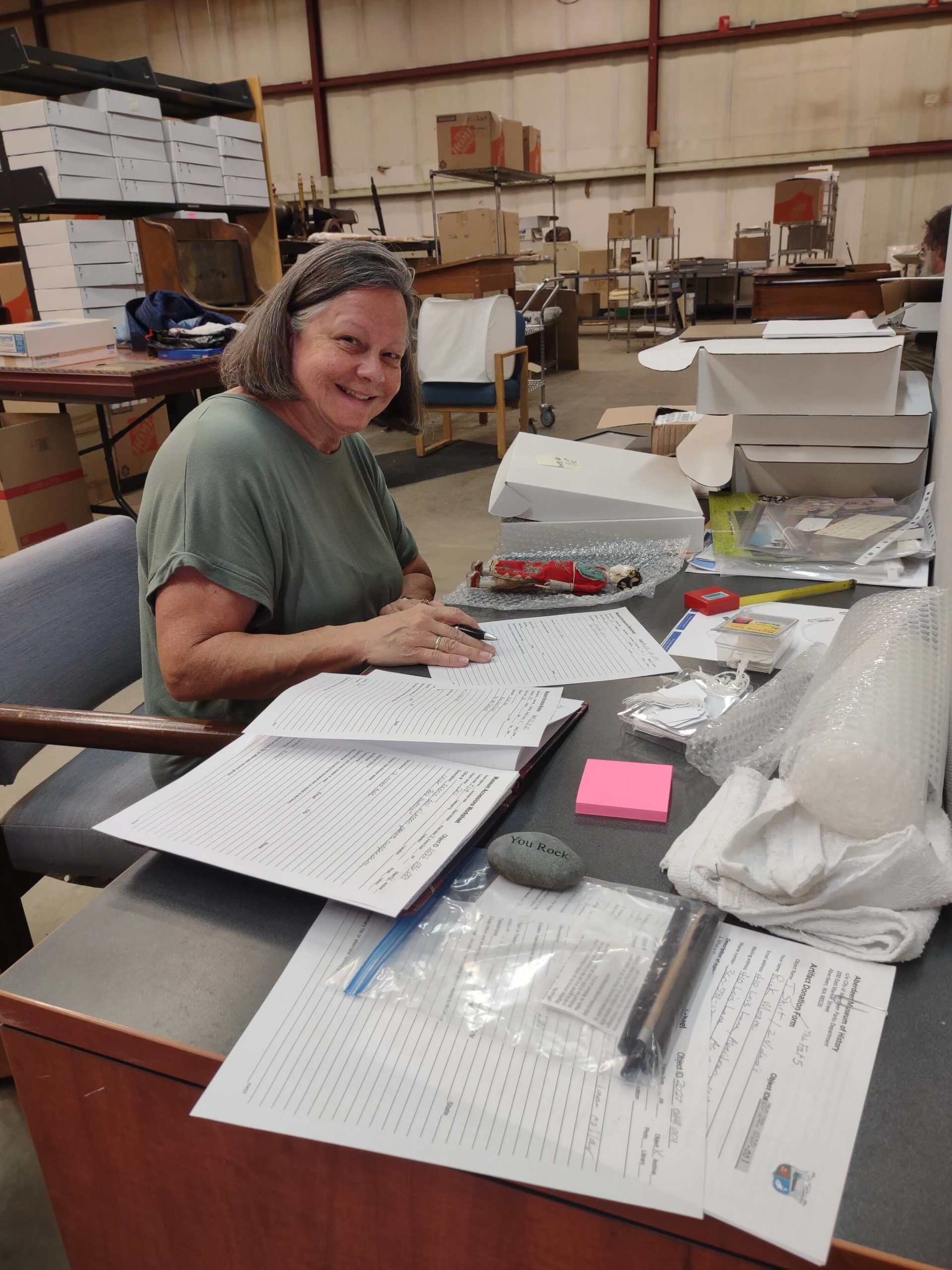Volunteers have been working for more than a month to prepare the Aberdeen Museum of History’s collection for its eventual move to a city-owned building in downtown Aberdeen.
Members of the public, Friends of the Aberdeen Museum and the Grays Harbor Genealogical Society have been participating in weekly efforts to document and reorganize remaining items in the collection following the June 2018 fire that destroyed the museum’s previous location.
“We are slowly getting this back into an updated inventory of what we have and how we’re going to handle it,” said Aberdeen Board of Museum and History Chair John Shaw. “We have hundreds of boxes. A lot of the items we aren’t getting into because they’re being moved, but we have to understand what is there so we can maximize the move to the new building.”
According to Shaw, the work being done by volunteers is crucial for properly planning the move to the new museum location in the 100 block of West Wishkah Street and ensuring that items are correctly placed within the building.
The work is also an answer for those members of the community who have requested to know what survived the fire at the armory.
“This is absolutely part of that process. This is updating what we have and what we’ve lost, and there’s been some good discussion about that, because in planning a museum, we have to know what we have — that’s part of moving forward,” said Shaw. “Right now, it’s been a long time between the fire, the settlement, and then COVID. This has been a long time coming, but we’re getting back to the museum business.”
Much of the work being performed by the volunteers has been identifying boxes the museum received from a restoration management company. The boxes are labeled and have been inventoried along with a brief description of the items, but have yet to be integrated into the PastPerfect Museum Software that the Aberdeen Museum uses for archiving.
According to Shaw, the small number of volunteers is anchored by a core group that has previous experience with PastPerfect documentation and has trained new volunteers in the software.
Other work includes reviewing items from the museum annex that had not been documented.
“We’ve done some interesting things. We went through six pallets of items that came over from the annex and just threw out the really, really obvious things, but left everything else for review by the committee. I’d say things are going well, it’s a slow, careful, start,” said board Vice Chair George Donovan at a Tuesday, June 7 meeting of the board.
As volunteer engagement continues, work must also be done at the new museum location to prepare the site to safely house the collection and any individuals working on it.
City officials are still in the process of identifying necessary improvements, including concerns about the fire and electrical components of the building. According to an assessment made earlier this year by Rock Project Management Services, it will cost the city nearly $1.6 million to bring the building up to par. That includes $1.25 million in direct construction costs and $352,000 in management and other costs.
Seismic upgrades, improving lighting and heating systems, and the removal of lead and asbestos have also been identified as priorities to bring the building up to life safety standards.
“We’re laying bricks in the process right now — we don’t know exactly what the timeline is going to be,” Shaw said. “We don’t want to move and miss some steps. There are some basic safety concerns as we start working over there, but we also have a mandate from the mayor to get the move done as expeditiously as possible.”
The collection is currently being stored at a warehouse in the Port Industrial area. Rent costs the city approximately $5,000 a month.
On Feb. 23, the city of Aberdeen closed its purchase of the old Salvation Army building in downtown Aberdeen for $350,000. The building was identified as a desirable location for the new museum and will allow the collection to be housed in a city-owned building.
The city hopes to recoup some of the cost for the purchase of the new building as well as the price of initial engineering and planning through a recently submitted Capital Heritage Grant, which would cover one-third of the city’s expenses, or $616,500.
Volunteering currently occurs on Thursdays, but will be moved to Tuesdays in the near future. According to Shaw, if the number of volunteers increases the board may expand work on the collection to two days a week.
And based on the long term goals for the museum, volunteers will be a necessary component in its success for the foreseeable future.
“Working on the collection isn’t point to point, it’s an ongoing thing. And virtually, there’s years worth of work ahead of us. There’s basic restoration and organization work, and then ongoing work like digitizing the whole collection, which is what we hope to do,” said Shaw.


